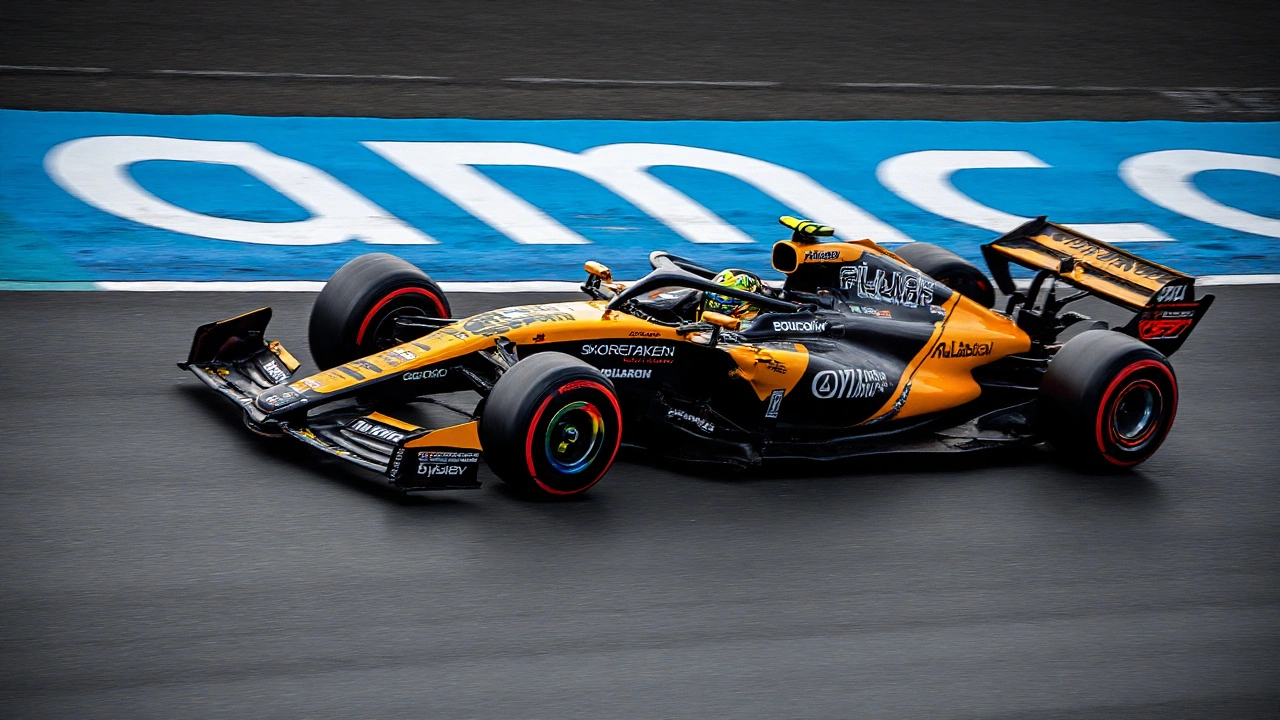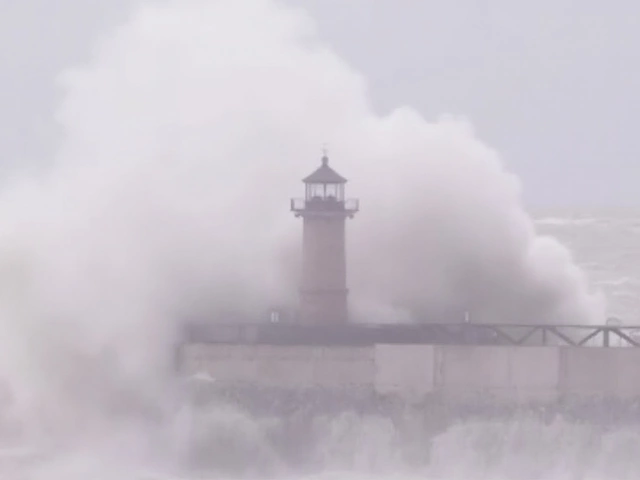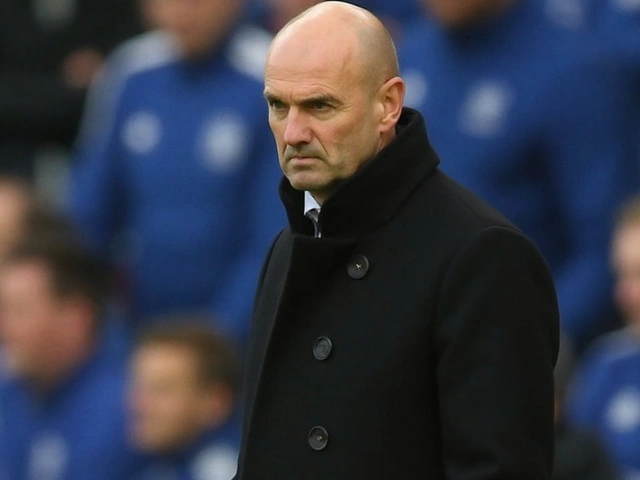Two sessions, same headline: Lando Norris was fastest in FP1 and FP2 at Zandvoort, and the orange grandstands may need to adjust to a new shade of dominance this weekend. The track was twitchy, the wind was tricky, and traffic was a nightmare, yet the stopwatch kept pointing to the same name. When the dust settled on Friday, McLaren looked like the reference.
In the second session, Norris led from Fernando Alonso, with Oscar Piastri third. George Russell and Max Verstappen rounded out the top five, while Lewis Hamilton and Yuki Tsunoda featured in the chasing pack. The order did swing as the track ramped up, but the papaya cars kept reappearing at the top whenever the laps mattered.
This comes with a wider backdrop that says a lot about the season. McLaren carry a 299-point lead in the constructors’ standings. The math is getting simple enough that simulations inside the paddock have them sealing the title as early as Azerbaijan if current trends hold. It is a staggering turnaround, and Zandvoort—high downforce, high commitment—looks tailored to what they do well.
What made McLaren so quick at Zandvoort?
Zandvoort is old-school narrow and new-school demanding. The banked Turns 3 and 14 reward a car with stable aero load and confident front-end bite, while the long, loaded corners punish anything nervous at the rear. That’s McLaren’s sweet spot right now. Across both sessions, the car looked planted through the cambered sections and tidy on traction out of the tighter complexes.
The story wasn’t just about one-lap fireworks. On the longer runs late in FP2, McLaren’s fuel-heavy pace stayed consistent. No big drop-off after five or six laps, which is usually where this place starts to chew up tires. That suggests they’re in a good window on pressures and temperatures—tricky to hold here with the coastal wind and the sand that drifts onto the racing line when cars stray.
Balance-wise, both drivers reported confidence early, and you could see it in the lines they took through Turn 3 and down the hill into the fast right-left sequence. No big mid-corner corrections, no snaps over the bumps. The team also seemed to hit a workable setup in FP1 and then refine rather than rethink in FP2, which is a luxury on a Friday with so many variables.
There was a thorn, at least briefly: Alonso’s Aston Martin popped into the picture with a strong FP2. That wasn’t a one-corner fluke either. The car looked lively through the medium-speed change of direction, and Alonso was comfortable leaning on the edge of the banking. It’s a useful wake-up call for McLaren, because qualifying at Zandvoort is mostly about who threads the needle in Q3 with a clean prep lap and no traffic.
Elsewhere, Russell found a rhythm as Mercedes worked through aero tweaks and out-lap routines—important here because tire preparation is half the lap time. Verstappen didn’t show headline-grabbing speed on the softs, but Red Bull rarely chases glory runs on Fridays at home races. The real question is how much they were holding back on fuel and engine modes. Hamilton and Tsunoda both strung together competitive segments, hinting at a very tight fight behind the McLarens.
As for the conditions, they were classic Zandvoort: gusts swirling over the dunes, grip coming and going, and the usual chaos when 20 cars try to make space on a ribbon of tarmac. We saw plenty of messy prep laps, minor offs, and a few yellow flags that wrecked otherwise promising runs. If you looked at mini-sectors, the time was in the banked corners and the braking into Turn 1. Teams that could switch on the fronts without overheating the rears were the ones jumping up the sheets.
What it means for qualifying and the race
Track position is king here. Overtaking looks better on TV than it is in reality, even with DRS into Turn 1. That puts a premium on clean qualifying execution, and that’s where McLaren’s Friday matters most. Norris starts as the favorite for pole, with Piastri close enough to capitalize if the final run comes down to who clears traffic and nails the prep. Alonso is the wildcard who can split them again if Aston Martin keep the balance in the sweet spot when the temperature swings.
The long-run picture is encouraging for McLaren as well. Degradation didn’t spike in the way some expected, and they seemed more forgiving on tire wear than a few of their rivals over eight to ten laps. That opens the door to a flexible strategy—start on the soft if track evolution overnight bumps grip, or go medium to play the long game and force others to pit first. Safety cars are a real possibility here, so teams will model both one-stop and two-stop outcomes and decide after lap five.
There are a few watch points heading into Saturday:
- Wind shifts: A small change can flip the balance in Turns 3 and 14. Cars that looked calm on Friday can get edgy fast.
- Traffic management: Zandvoort bites back if you rush the out-lap. Expect pit walls to choreograph gaps down to the second in Q1 and Q3.
- Out-lap tire prep: This track punishes cold fronts into Turn 1. Teams will experiment with slower final sectors before push laps to keep temperatures in the right window.
- Fuel and engine modes: Some rivals kept their powder dry. The true gap might compress by a couple of tenths when everyone turns it up.
Zooming out, the championship picture is plain. With a 299-point cushion, McLaren can think about scenarios rather than scrambling for them. If the form carries through, their constructors’ title could be wrapped up by Azerbaijan, a sentence that would have sounded absurd at the start of last year. Norris looks supremely at ease in the title fight, and Piastri keeps landing the backup punches that teams need to close the deal early.
None of this is to say Friday locks anything in. Zandvoort has a way of tossing curveballs—late gusts, drifting sand, a mistimed yellow flag right as someone hits their best lap. But sample size matters, and across two sessions, McLaren had the tidiest car, the most repeatable pace, and the fewest rough edges.
The rivals know what they’re staring at. To beat the papaya cars, someone needs to find two tenths through the banked turns without paying for it in rear tire life after lap five. That’s a tough trade at this circuit. If they can’t, the orange sea in the grandstands might be watching a different kind of orange lead the dance all weekend.
Saturday will answer the two big questions: can anyone pull level with McLaren when the fuel comes out, and can Norris convert practice control into pole under pressure? On the evidence so far, the benchmark has been set. Everyone else is chasing it into Turn 1.





